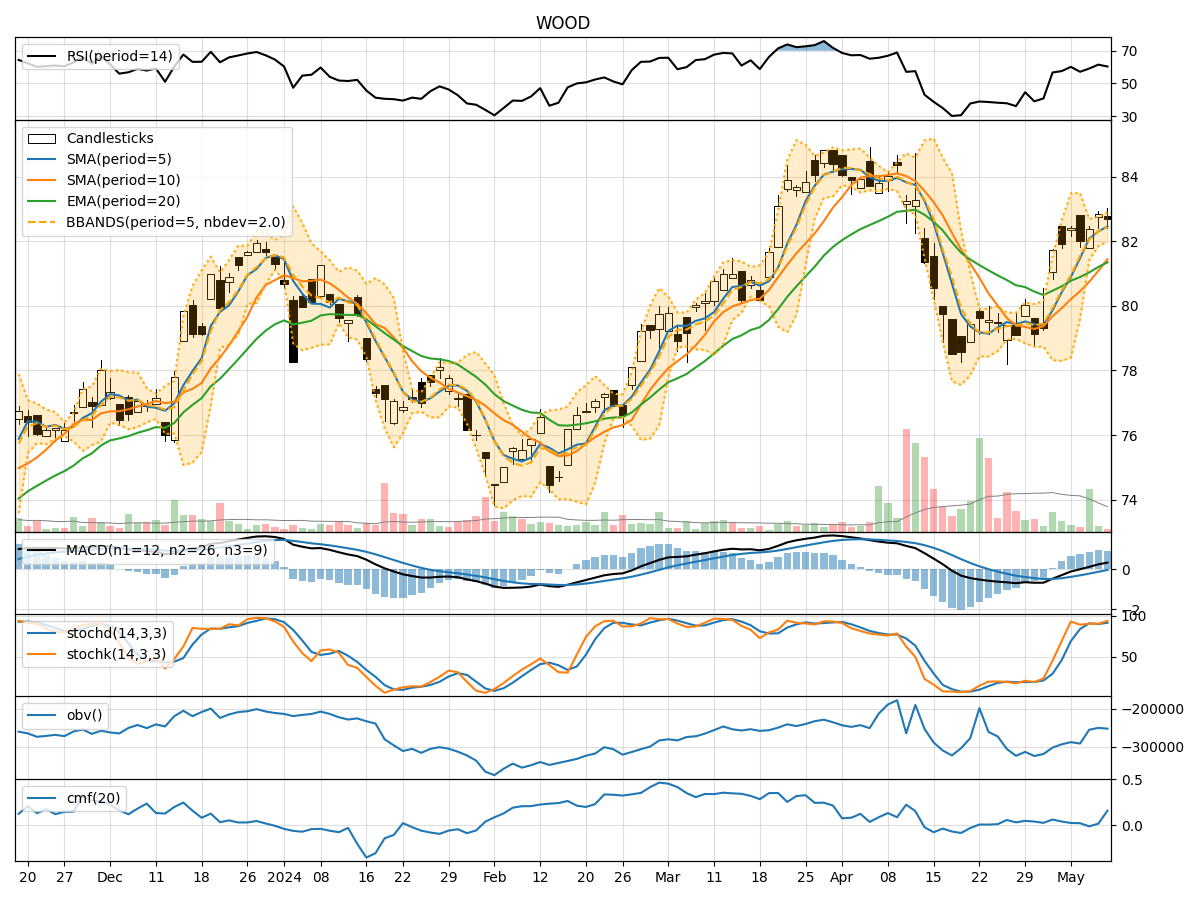
Technical Analysis of WOOD 2024-05-10
Overview:
In analyzing the technical indicators for WOOD stock over the last 5 days, we will delve into the trend, momentum, volatility, and volume indicators to provide a comprehensive outlook on the possible stock price movement in the coming days. By examining these key indicators, we aim to offer valuable insights and predictions for potential investors and traders.
Trend Analysis:
- Moving Averages (MA): The 5-day Moving Average (MA) has been consistently above the Simple Moving Average (SMA) and Exponential Moving Average (EMA), indicating a bullish trend.
- MACD: The Moving Average Convergence Divergence (MACD) has been steadily increasing, with the MACD line above the Signal line, suggesting a bullish momentum.
Momentum Analysis:
- RSI: The Relative Strength Index (RSI) has been fluctuating around the 60 level, indicating a neutral momentum.
- Stochastic Oscillator: Both %K and %D have been in the overbought zone, suggesting a potential reversal or consolidation.
Volatility Analysis:
- Bollinger Bands (BB): The stock price has been trading within the Bollinger Bands, with the bands narrowing, indicating decreasing volatility.
Volume Analysis:
- On-Balance Volume (OBV): The OBV has shown mixed signals, with fluctuations in volume accumulation.
- Chaikin Money Flow (CMF): The CMF has been positive, indicating buying pressure in the stock.
Key Observations:
- The trend indicators suggest a bullish sentiment in the short term.
- Momentum indicators show a neutral stance with a possibility of a reversal.
- Volatility has been decreasing, indicating a potential consolidation phase.
- Volume indicators reflect mixed signals with some buying pressure.
Conclusion:
Based on the analysis of the technical indicators, the next few days' possible stock price movement for WOOD is likely to be sideways with a slight bullish bias. Traders should monitor the stochastic oscillator for potential reversal signals and keep an eye on the OBV for confirmation of buying pressure. It is advisable to set tight stop-loss levels to manage risk in case of unexpected price movements.